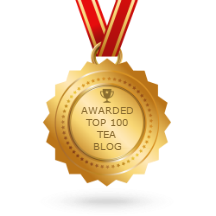You can have a teatime full of color, from the reds/greens/golds of the Christmas holiday season to the brilliant red for Valentine’s Day, the bright greens for St. Patrick’s Day, and the pastels (pink, baby blue, yellow, and pale green) typical for Spring- and Easter-themed teas. Or you can emulate many eateries in the U.S. and abroad by sticking to “basic white” teawares. Some have even become icons of a sort, such as this one, famous throughout Twitter and Facebook as Devonshire Tea’s “Great White”:

What makes a scene of new, fresh snow glistening over lawns, rooftops, roads, and fields so appealing? It’s fresh and clean, for one thing, ready for sledding, snowman building, leaving a trail of boot prints, and more possibilities. What about a nice clean white sheet of paper on the table before you as a writer or artist? It lies there, quiet, patient, receptive. And when you’re ready, it soaks up the ink from your pen, the graphite from your pencil, the watercolor paint from your brush. “Basic white” teawares are just as fresh, clean, and receptive to your teatime adventure.
These clean-looking teawares have another advantage: the lack of distracting patterns and/or colors that could clash with the teas and treats in and on them. Have you ever sat tracing, either with your spoon, fork, knife, or just your eyes the intricate pattern scrolled around the edges of a plate? Round and round and round you go until you’re dizzy or the food is gone. Worse yet are the designs that have a “top” and “bottom,” such as the famous pattern called “Blue Willow.” If you have a bit of obsessiveness in your mental makeup as I have, you’ll be distracted from enjoying your repast by needing to keep adjusting the plate in front of you so that the “top” and “bottom” are in their proper places.
 As for color clashes, ever served a black tea (the steeped liquid is usually a nice ruby color) in a cup or mug that is some color that doesn’t quite visually agree with it? Maybe lime green or even aqua? Of course, a tea such as Ti Kuan Yin Iron Goddess Oolong that steeps up a pale yellow-green liquid would go well in most colored cups, but you would not really see the beautiful color against anything other than white or clear glass. If the visual experience of the tea is as important to you as (or at least somewhat as important as) the flavor and aroma of the tea, then by all means stick to those “basic white” teawares.
As for color clashes, ever served a black tea (the steeped liquid is usually a nice ruby color) in a cup or mug that is some color that doesn’t quite visually agree with it? Maybe lime green or even aqua? Of course, a tea such as Ti Kuan Yin Iron Goddess Oolong that steeps up a pale yellow-green liquid would go well in most colored cups, but you would not really see the beautiful color against anything other than white or clear glass. If the visual experience of the tea is as important to you as (or at least somewhat as important as) the flavor and aroma of the tea, then by all means stick to those “basic white” teawares.
Of course, you can always go with a bit of drama by inserting some black teawares here and there in the teatime arrangement. Or make it a colorful teapot surrounded by those clean white tea cups and saucers and plates for the goodies. Then, let the possibilities unfold, like when you build that snowman or first put pen to paper for that opening sentence to your next opus.
Enjoy!



Leave a reply to carla frequera Cancel reply